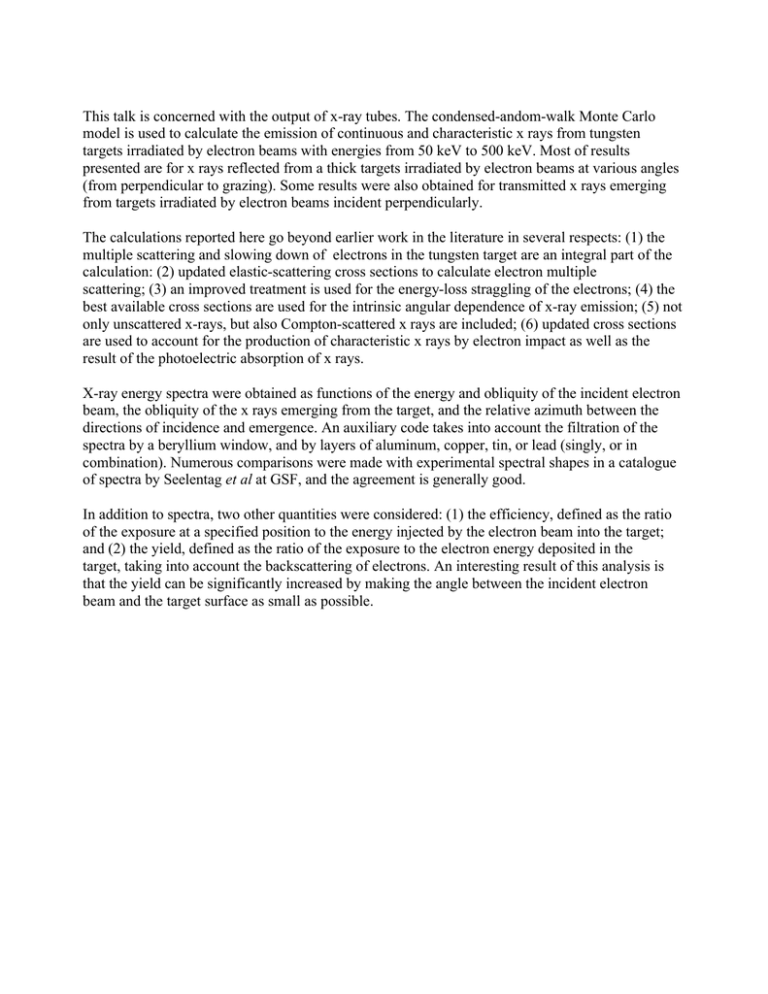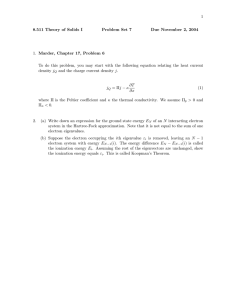This talk is concerned with the output of x-ray tubes.... model is used to calculate the emission of continuous and...
advertisement

This talk is concerned with the output of x-ray tubes. The condensed-andom-walk Monte Carlo model is used to calculate the emission of continuous and characteristic x rays from tungsten targets irradiated by electron beams with energies from 50 keV to 500 keV. Most of results presented are for x rays reflected from a thick targets irradiated by electron beams at various angles (from perpendicular to grazing). Some results were also obtained for transmitted x rays emerging from targets irradiated by electron beams incident perpendicularly. The calculations reported here go beyond earlier work in the literature in several respects: (1) the multiple scattering and slowing down of electrons in the tungsten target are an integral part of the calculation: (2) updated elastic-scattering cross sections to calculate electron multiple scattering; (3) an improved treatment is used for the energy-loss straggling of the electrons; (4) the best available cross sections are used for the intrinsic angular dependence of x-ray emission; (5) not only unscattered x-rays, but also Compton-scattered x rays are included; (6) updated cross sections are used to account for the production of characteristic x rays by electron impact as well as the result of the photoelectric absorption of x rays. X-ray energy spectra were obtained as functions of the energy and obliquity of the incident electron beam, the obliquity of the x rays emerging from the target, and the relative azimuth between the directions of incidence and emergence. An auxiliary code takes into account the filtration of the spectra by a beryllium window, and by layers of aluminum, copper, tin, or lead (singly, or in combination). Numerous comparisons were made with experimental spectral shapes in a catalogue of spectra by Seelentag et al at GSF, and the agreement is generally good. In addition to spectra, two other quantities were considered: (1) the efficiency, defined as the ratio of the exposure at a specified position to the energy injected by the electron beam into the target; and (2) the yield, defined as the ratio of the exposure to the electron energy deposited in the target, taking into account the backscattering of electrons. An interesting result of this analysis is that the yield can be significantly increased by making the angle between the incident electron beam and the target surface as small as possible.


